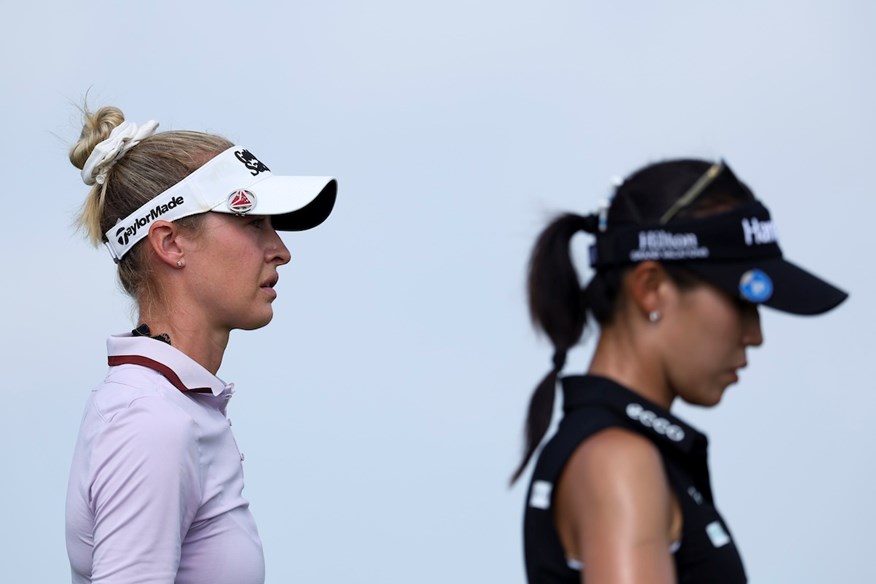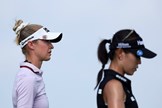Iona: Why the gender pay gap in golf still matters
Published:

There is still a vast difference between men’s and women’s golf. And it’s not just financial, writes TG columnist Iona Stephen…
In the last few months I have been covering several events on the PGA Tour for Sky Sports where the average pay check for the winner of a standard tour event – so outside of the majors and signature events – is more than $1.5 million.
Across on the LPGA Tour and the average for the winner is less than a third of that. The quality of golf is the same. The stage, however, is not.
In professional golf, the gender pay gap is more than a number, it’s a message. And despite progress, it’s still loud and clear.
Let’s start with the figures. In 2024, the PGA Tour’s total purse across the season exceeded $560 million. The LPGA Tour’s was around $115 million. The largest check on the LPGA Tour – the $2 million paid to the winner of the CME Group Tour Championship – was a significant step forward. But when Scottie Scheffler can earn north of $20 million in a single season in prize money alone, it puts things into sobering context.
Zoom in on Europe and the disparity deepens. The Ladies European Tour continues to fight for relevance and sponsorship, even as its players juggle travel, childcare and expenses that often outpace prize money. Sometimes I think about my career and wonder how hard it might have been to make a living on the LET before my injury took me into the media world. Deep down I know the answer.
Getting to the root of the gender pay gap problem
It’s tempting to look at prize funds in isolation. But the root issue is exposure. Fewer televised events. Limited mainstream coverage. Smaller corporate investment. A sport’s purse size reflects its perceived value and women’s golf has long been undervalued.
Part of that comes down to outdated perceptions, that because the men hit it further, the drama is greater, and the women’s game is somehow a diluted version of the main event. But ask anyone who watched Nelly Korda string together five consecutive wins last season – including a major, no less – whether that’s true and you’ll get a very different answer.
Broadcast coverage plays its part, too. In a world where airtime dictates income, prime slots are often reserved for the men. Tee times, media focus, and sponsorship visibility follow suit.
To be fair, there has been some progress. The CME Group’s investment has boosted end-of-season stakes on the LPGA. The Mizuho Americas Open, led by Michelle Wie West, introduced fresh formats and global attention. In the UK, the Rose Ladies Series, which was born in lockdown and largely financed by Justin and Kate Rose, has grown into a symbol of opportunity and resilience.
Profiles matter too and players like Korda, Lexi Thompson, Charley Hull and Leona Maguire continue to raise the bar not just with their clubs but with their platforms and personalities. And this is something that should be encouraged.
At the KPMG Women’s PGA Championship earlier this year, Korda called out the “ridiculous” pace of play, adding that they played an “almost six-hour round”. When marathon rounds occur in women’s majors, they not only wear on players but risk driving viewers away and for a game still fighting for airtime, every minute counts. Slow play isn’t a gendered issue, we’ve seen it frustrate fans across both tours but in women’s golf, the stakes are higher when it comes to audience retention and media appetite.
Look at women’s soccer, a sport that has turned marketing into momentum. In England, the Women’s Super League signed a £65 million domestic TV deal with Sky and the BBC. Attendance in Europe’s top leagues rose by 24% last season and, with stronger branding, better scheduling, and visible support from federations and clubs, the women’s game is growing fast.
Consistent TV coverage, strategic promotion, and genuine investment. The formula is working. Golf would do well to follow that lead. Maybe Serena Williams’ husband would like to invest in women’s golf like he does women’s soccer? Or, better yet, Williams herself. Despite the signs of progress, women’s golf still trails in key areas, broadcaster interest, good character storytelling and commercial support, which keeps the pay gap stubbornly in place.
Equal pay in golf isn’t just about money. It’s about what we value as a sport. If we believe that athletic excellence, mental toughness, and competitive fire are the essence of golf, then they should be rewarded wherever they are found.
Investing in women’s golf grows the game. It creates more fans, more players and more stories. It makes golf more inclusive and reflective of the real world. And crucially, it sends a message to young girls and boys, that talent knows no gender.
I’ve seen firsthand the power of women’s golf. I’ve watched young fans inspired by Georgia Hall at Royal Lytham, by Rose Zhang’s composure in her debut win, and by Lydia Ko winning the AIGWO in a four-club wind at St Andrews. And I was one of those young fans. I watched Kylie Henry, I watched Catriona Matthew, and I am where I am today because I was lucky enough to see them in action up close. But I am one of few.
These stories deserve just as much spotlight as those unfolding on the PGA Tour. Because the gap isn’t just financial. It’s perceptual. And it will only close if we keep telling the stories, keep showing up, and keep demanding more.
